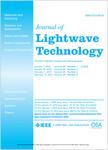版权所有:内蒙古大学图书馆 技术提供:维普资讯• 智图
内蒙古自治区呼和浩特市赛罕区大学西街235号 邮编: 010021

作者机构:Univ Sci & Technol China Dept Opt & Opt Engn Hefei 230026 Peoples R China Chinese Acad Sci Shanghai Inst Opt & Fine Mech Key Lab Space Laser Commun & Detect Technol Shanghai 201800 Peoples R China Shanghai Key Lab Satellite Network Shanghai 200120 Peoples R China
出 版 物:《JOURNAL OF LIGHTWAVE TECHNOLOGY》 (J Lightwave Technol)
年 卷 期:2025年第43卷第9期
页 面:4063-4075页
核心收录:
学科分类:0810[工学-信息与通信工程] 0808[工学-电气工程] 08[工学] 0702[理学-物理学]
基 金:Strategic Priority Research Program of the Chinese Academy of Sciences [XDB43030402]
主 题:Imaging Three-dimensional displays Laser radar Laser beams Point cloud compression Optical fiber polarization Target recognition Distance measurement Optical fiber amplifiers Measurement by laser beam FMCW coherent detection Mueller matrix polarimetric imaging LiDAR target classification
摘 要:We present a three-dimensional (3D) polarimetric imaging light detection and ranging (LiDAR) based on frequency modulated continuous wave (FMCW) coherent detection and Mueller matrix polarimetry techniques for target classification. The proposed 3D polarimetric imaging LiDAR can accurately determine which point clouds (or pixels) are on target without ambiguity, which is generally challenging for conventional imaging LiDAR. To reduce artifacts caused by time-sharing polarization imaging, the spatial parallelism and beam synchronization methods are designed to simultaneously obtain multi-polarization point clouds by using Risley-prism multi-beam scanning. After acquiring the point clouds of the polarized reflection intensity, the long-range target recognition and classification can be preliminarily achieved. After calculating the Mueller matrix, the polarization characteristics of the target can be further characterized, thereby achieving more precise target recognition and classification. It is experimentally validated that the architectural materials and structural details with different polarization characteristics can be effectively distinguished and classified by using different polarization parameters, significantly improving the accuracy of target recognition. This study may open new opportunities for 3D perception of urban architecture.